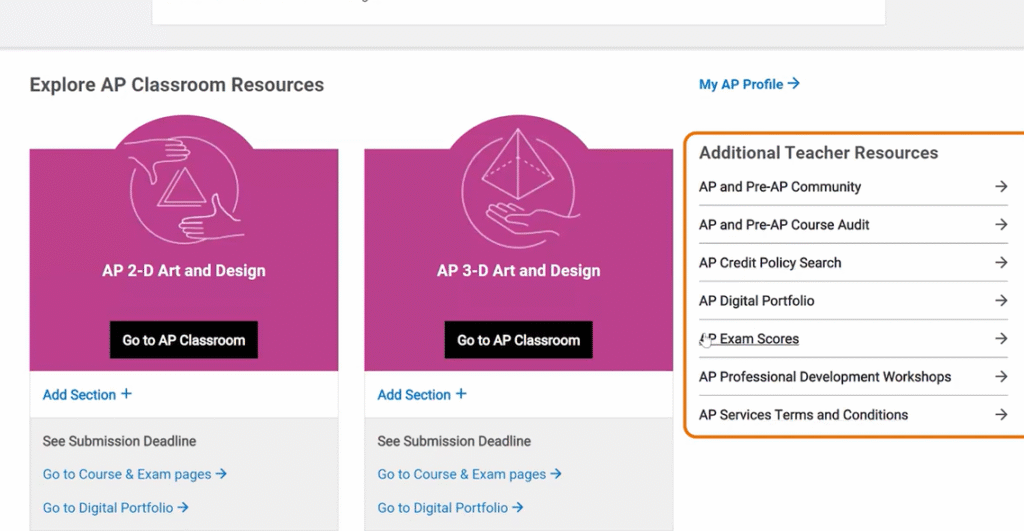Students are now able to successfully navigate the demanding course of Advanced Placement coursework with the help of AP Classroom. It was created by the College Board and is more than just a resource portal; it is a methodical, flexible framework that directs both daily instruction and long-term test preparation. Its impact has significantly increased in recent academic cycles, providing teachers and students with resources that improve performance and expedite learning.
The platform offers a very clear road map for students. Every AP course includes comprehensive unit guides that divide the curriculum into digestible chunks and pacing recommendations to help students stay on course. Students juggling multiple AP classes, where efficiency is just as crucial as depth, will especially benefit from this organization. By lowering uncertainty and establishing a sense of purpose, it greatly boosts confidence.
Concepts are effectively reinforced by the AP Daily Videos. Under the direction of seasoned AP teachers, they simplify difficult concepts into easily understood explanations that students can pause, fast-forward, and rewatch as necessary. These lessons can be repeated until the ideas become second nature to a student working on the mechanics problems in AP Physics C or the complex political eras in AP U.S. History. Instructors have discovered that by carefully assigning these videos, class time can be devoted to discussion, analysis, and group problem-solving rather than rote memorization.
AP Classroom – Key Facts
| Category | Details |
|---|---|
| Platform Name | AP Classroom |
| Developer | College Board |
| Purpose | Online instructional resource hub for AP courses |
| Launch Year | 2019 |
| Access Requirements | College Board account, AP Course Audit approval for teachers |
| Main Features | Unit Guides, AP Daily Videos, Topic Questions, Progress Checks, Question Bank |
| Target Users | AP Students, AP Teachers |
| Available Formats | Web platform, Mobile app (limited regions) |
| Official Website | https://myap.collegeboard.org |

The use of Topic Questions has shown itself to be especially creative in many high-achieving classrooms. With the help of these brief, formative tests, educators can monitor students’ understanding in real time and spot misconceptions before they impede learning. The last-minute scramble to cover knowledge gaps before the AP exam season is remarkably avoided by taking this proactive approach.
Progress Checks expand on this by providing multiple-choice and free-response questions that closely resemble the structure of the AP Exam. In addition to assessing knowledge, they help students get used to the pace and difficulty of the test. The feedback is very clear and demonstrates trends in both strengths and weaknesses. Instructors can view individual performance or class data, allowing for focused interventions that deal with problems before they become entrenched.
The extremely flexible AP Classroom Question Bank provides a searchable collection of actual AP Exam questions arranged by subject and ability. While self-motivated students create their own focused practice sets, teachers utilize it to create unique assignments. Regular use of this feature has been associated with significantly higher scores—not through rote memorization, but rather through real-world interaction with exam-level problems.
The platform’s resemblance to the Bluebook digital exam interface is one minor but important advantage. Test-day anxiety is lessened by this familiarity. Under pressure, students’ ability to track time, manage digital free-response submissions, and navigate the system can make a significant impact.
The growth of the platform is indicative of a broader trend toward blended learning, in which qualified teachers are supported by technology but not replaced by it. It’s comparable to a proficient pilot using sophisticated instruments to increase accuracy rather than replace their knowledge. To make sure no student is overlooked, teachers utilize AP Classroom’s analytics to improve their teaching strategies.
Educational leaders have compared the reach of AP Classroom in recent years to programs supported by well-known learning technology advocates. Despite not having a celebrity brand, it has a significant influence in its own field. It reduces the disparity between schools with adequate funding and those with inadequate AP infrastructure by ensuring that premium resources are available to all. When paired with inspired instruction, this digital equity can change the results for students who might otherwise experience systemic disadvantages.
Critics point out difficulties. Since dependable internet access is still necessary, connected environments are ideal for AP Classroom. Some educators warn against relying too much on it, emphasizing the importance of human interaction and hands-on discussion. Even so, these worries have prompted innovative solutions, such as schools setting up study spaces, libraries providing login stations, and nonprofits teaching students how to use the system efficiently.
Students who are interested in competitive universities can benefit greatly from the platform. A well-thought-out mix of Question Bank practice, Daily Videos, and Progress Checks can improve content mastery and mental toughness. Teachers can collaborate across districts and even states thanks to AP Classroom, which acts as a common language for instruction.
The hybrid future of education is embodied by AP Classroom, where data-driven tools complement human interaction rather than diminish it. It combines flexibility and rigor, providing teachers and students with a versatile foundation on which to build. Tools that teach and prepare students for exams will continue to be crucial as the competition for college placements heats up.
The impact on society is subtle but long-lasting. AP Classroom contributes to dispelling the myth that only particular areas or educational institutions can generate high AP scores by standardizing access to advanced preparation. The increasing diversity of students entering AP exam rooms prepared to give their best effort will be the true test of its success, not just the number of logins

